
A platform that encourages healthy conversation, spiritual support, growth and fellowship

NOLACatholic Parenting Podcast
A natural progression of our weekly column in the Clarion Herald and blog

The best in Catholic news and inspiration - wherever you are!
Beware rain! Mirabeau Garden will capture you
-
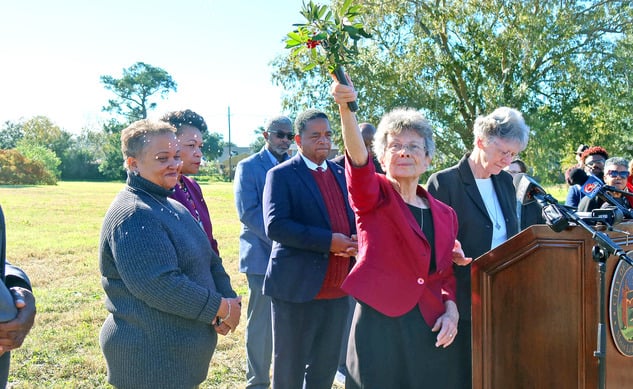
By Christine Bordelon
Clarion HeraldConsidering that 100-year floods have been happening in New Orleans more often than once every 100 years, it was reassuring Dec. 11 that the city of New Orleans is finally moving ahead with the Mirabeau Water Garden, a water-retention project that was first proposed by the Congregation of St. Joseph more than a decade ago.
“Can’t you just feel the excitement in the air?” said St. Joseph Sister Pat Bergen, who flew in from Chicago to be with St. Joseph Sister Joan Laplace, representatives of Waggonner and Ball Architects that remained with the project since 2010, city and other officials, for a ground-breaking on the 25-acre plot of land at the corner of Mirabeau and St. Bernard avenues in New Orleans. “The sense of hope has raised to a fever pitch in our hearts.
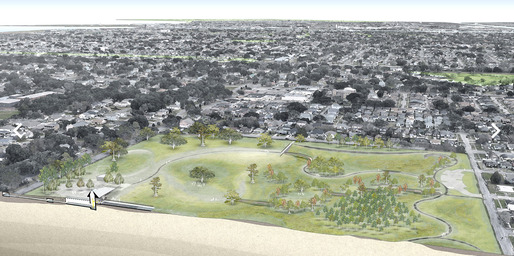
“Today is finally the day when this holy ground is about to open and give itself as a gift to New Orleans and all the people around the world,” Sister Pat said. “So many have waited so long for the birth of this moment. … What’s about to happen here is no little thing. This is big folks, really big. We thought those years of waiting for this project to begin were a long Advent. Well, people of Noah’s time must have thought it had taken him an awful long time to build the ark to save the world from flooding.”
A long ‘Advent’
Sister Pat compared the wait for the site to be put back into use – it once was home to the convent of the Congregation of St. Joseph – as an “Advent” longer than anybody thought.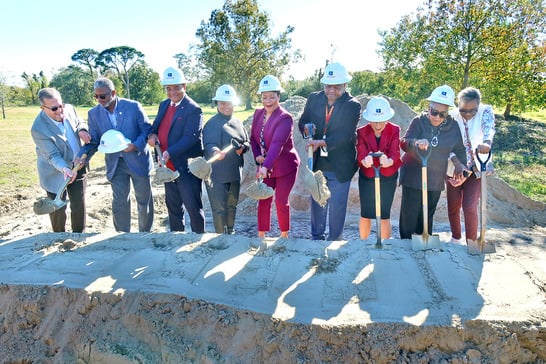
Tracing its inception, she referenced God, the divine dreamer, who “began dreaming of how this holy land could reveal unifying love. This land has a vocation. … It came into existence pregnant with God’s dream, waiting for just the right moment to open to reveal.”
Sister Pat said in preparation for this “holy birth,” the native Americans who first lived here protected and nurtured the holy space. Then, the Sisters of St. Joseph, whose mission is unifying love, made it their home, and “their love permeated the neighborhood and the culture of New Orleans.”Katrina devastated the city in 2005, inundating the sisters’ home with seven feet of water. A year later, a lightning strike caused a fire, laying waste to what was left of the convent.
By 2008, “the sisters began a long Advent vigil of praying for a dream that would enable this land to continue our ministry of unifying love to the people, to the whole city of New Orleans.”
While they could have sold the property to developers several times, meeting urban and environmental architect David Waggonner, the founding principal of Waggonner & Ball, gave birth to their intention for the 25-acre tract of land: water-retention.
“David’s design was the gift we were praying for,” Sister Pat said.
The Sisters of St. Joseph decided to give the land to the city of New Orleans for $1 a year for 99 years. This helped when Waggonner pitched the project to city officials. Then, the design won a water resilience creativity competition sponsored by the U.S. government, and the city of New Orleans was granted $143 million and the state of Louisiana $93 million.
“This attracted world recognition, escalating world hope in a promise to help manage flooding in every city in the world,” Sister Pat said. The city finally signed the winning bid from M.R. Pittman Contracting Company for the project.
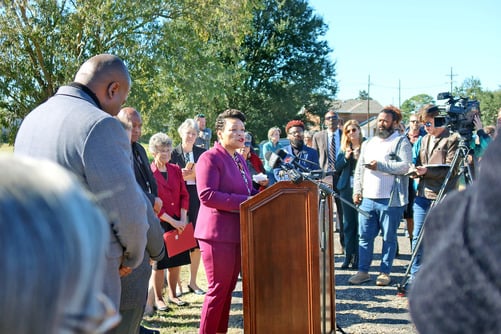
Before the groundbreaking, Sister Joan read a prayer, asking God to bless the property and all associated with it, as Sister Pat blessed the ground north, south, east and west with holy water.
“We bless and break this ground today for the Mirabeau Water Garden for urban stormwater management, that this land will continue to render service to our beloved city of New Orleans. May it benefit the people in times of critical need, provide a peaceful oasis of green space and direct our attention and appreciation to the gifts of the natural world.”
Project has taken longer
Cost of the project has ballooned from $20 million to approximately $31 million, said Andy Sternad with Waggonner and Ball Architects. It will be built in phases, with the bulk of the project in Phase I – installation of most of the water storage features that will relieve the city’s drainage by having a 6-million-gallon capacity to retain water. It will also include passive recreational opportunities such as walking paths and bridges, contemplative spaces and replanting of native plant species to the tract of land. (Some 20,000 trees are expected to be planted over the project to provide an urban canopy and absorb water.)Another part of the transformative project will be educational – teaching students and adults about the science of water management and its native plants.
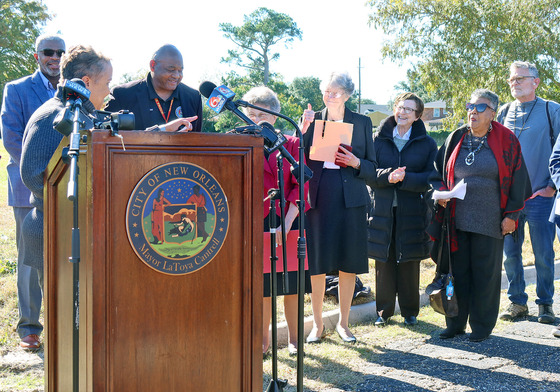
“I look at this as sacred ground,” said Ron Spooner, interim general superintendent of the Sewerage and Water Board of New Orleans. “We’re going to have a fabulous project here, with retaining water, storing water and preventing that water from going to two pumping stations and into Lake Pontchartrain. … It is going to be the jewel of this community in Gentilly, for everyone to gather, where you can learn about nature, learn how the plants filter the pollutants from stormwater and learn what nature is all about. We have a lot of kids and even adults who don’t know about nature. … I think this project is key for our urban counterparts to truly understand what nature is all about.”
Mayor Latoya Cantrell and all others who took to the podium thanked the Congregation of St. Joseph.
“None of this would be possible without the partnership and full support of the Sisters of St. Joseph,” Cantrell said. “The sisters donated this land to the City of New Orleans on one condition – that it be used to benefit the neighborhood. I cannot think of one project that will mean so much, not only to this community but also to eliminate or mitigate flooding of the rainwater in the city of New Orleans, particularly in Gentilly.”
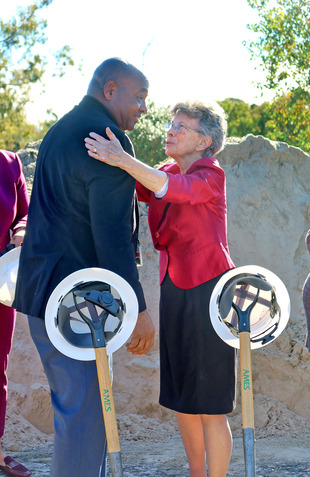
Benefits galoreIt is estimated that the positive economic impact of this project will be $210 million in avoiding flooding losses, business interruptions and urban heat reduction.
“We finally feel like it’s going to happen,” Sister Joan said. “We’ve never given up hope. We feel like David Waggonner and his team are still with us.”
Waggonner’s son Pat was at the ground-breaking ceremony.
“We’re really excited about it,” said Sister Pat, who traveled from Chicago at short notice to attend. “It’s a hope for the world with this groundbreaking. Everything changes when this ground turns. People around the world will take notice” (and realize it can be replicated). There’s a promise and a hope that it is finally coming to fruition.”




